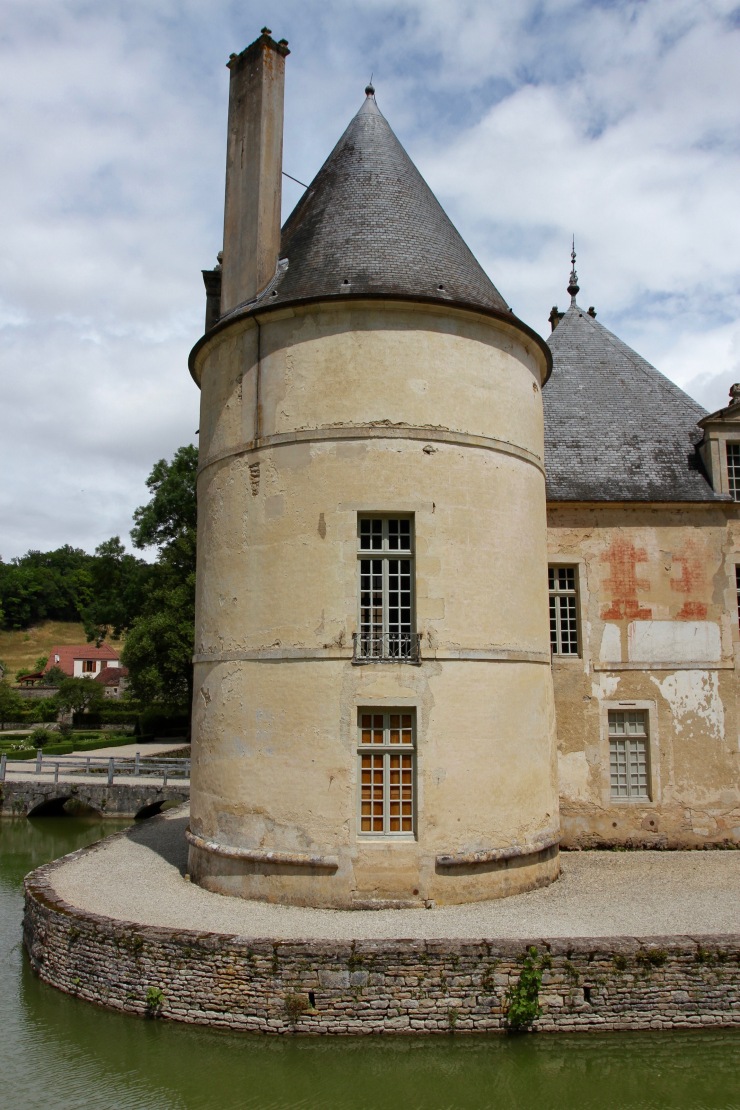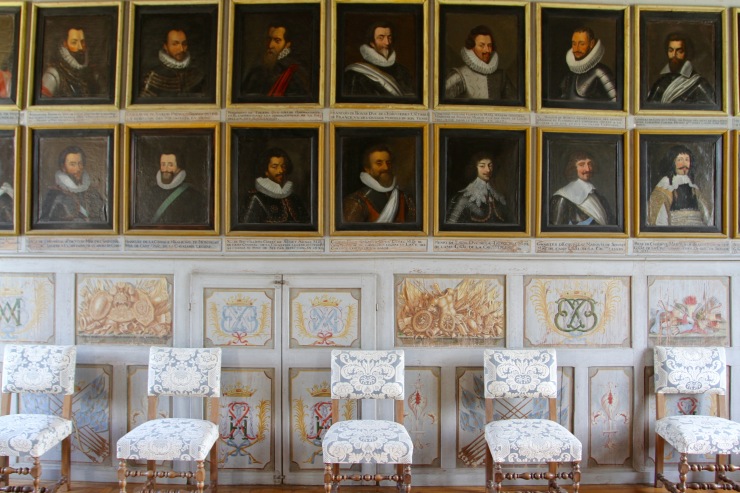Sitting on a hillside overlooking a picturesque valley that separates it from the village of Bussy-le-Grand, the Château de Bussy-Rabutin is a beautiful and dramatic sight. It’s a little off the beaten path, but it’s well worth a diversion to explore a unique piece of French history. Surrounded by moats, gardens and eighty-four acres of parkland, the chateau dates from the 12th century but the elegant building you see today is from the 16th century.
The harmonious exterior, with three wings and four round towers, is matched by the extraordinary decor of the interior. The splendour of the building and the glories of its setting fade almost to insignificance next to its most famous (perhaps ‘notorious’ is a better word) inhabitant, a man with a passion for scandal.





Roger de Bussy-Rabutin was a man of his time, perfectly at home in the flamboyant and decadent age of Louis XIV, the Sun King. As a courtier in Louis’ court, he seems to have had a talent for trouble. He soon found himself disgraced for ridiculing the King’s mistress and neglecting his military duties. Worse was to come. In 1659, he was one of several participants in an orgy during Holy Week. The orgy caused a scandal at court and he fell into disgrace once again.
After the orgy, he was exiled to Château de Bussy-Rabutin. This doesn’t seem like much of a punishment, especially given that his mistress, Madame de Montglas, was allowed to accompany him. They put their exile to good use by exposing the love affairs of famous contemporaries in a book, Histoire Amoureuse des Gaules. The book was scurrilous, and painted an unflattering portrait of many at court, including members of the royal family. It caused outrage.





In an entirely predictable turn of events, the book did not go down well with the King. Louis XIV was furious, particularly as the book was quickly copied and was circulating widely in Paris and at court. As punishment, Bussy-Rabutin was sent to the Bastille for over a year. Upon his release he was again exiled to his estate at Château de Bussy-Rabutin, where he spent the next 28 years until his death in 1693.
Stuck in the Burgundian countryside, he distracted himself by managing his property and amassing a large collecting of portraits, mainly of the court and other famous people. This includes portraits of his 25 mistresses, now hanging in his bedchamber. In one wing of the chateau hang portraits of great leaders and generals. This includes Oliver Cromwell, a man who killed a king, and who died shortly before Bussy-Rabutin was sent to the Bastille. Cromwell hangs next to a portrait of Benjamin Franklin.





The warm sunny weather of earlier in the day had turned stormy but, as I arrived at the chateau, the sun shone brightly on the building and grounds. I wandered through the gardens while a gang of French school children were chaperoned around the building. Eventually, there was a clap of thunder and the heavens opened. The torrential rain had me running through the chateau courtyard to seek shelter inside. There are worse places to keep out of the rain.
Bussy-Rabutin described the interior as being “a singular beauty that cannot be seen anywhere else … you can find such wonderfully amusing things there“. The ground floor rooms were a little disappointing, but things got a lot more interesting upstairs (pardon the pun). The rooms are filled with portrait paintings, some hung from the walls, others painted on the walls. It’s a remarkable building. On my way out a peacock was walking around the grounds. A reincarnation of the chateau’s former owner perhaps?






Very interesting. I did not know of him. And when I saw his name, I thought “Rabutin-Chantal” which was the maiden name of the marquise de Sévigné, famous in France for her letters to her daughter. I think every French schoolboy/girl has had to write an essay on one of her letters. She was born and lived in one of the “Hotels” of the Place des Vosges. Bussy-Rabutin was her cousin.
Delighted again by this post Paul. It seems you had a great and rich holiday. 🙂
Look forward for more.
Tor ziens.
Hi Brian. It was a fascinating place, and it was a great trip – Burgundy seems to be packed with fascinating places. Apparently he wrote some pretty scurrilous things about the marquise de Sévigné in his book, but I read somewhere that a large number of her letters were only discovered in his library. So he had a role in popularising her works. Hope all’s well, Paul
Didn’t know that. Interesting. Cheers.